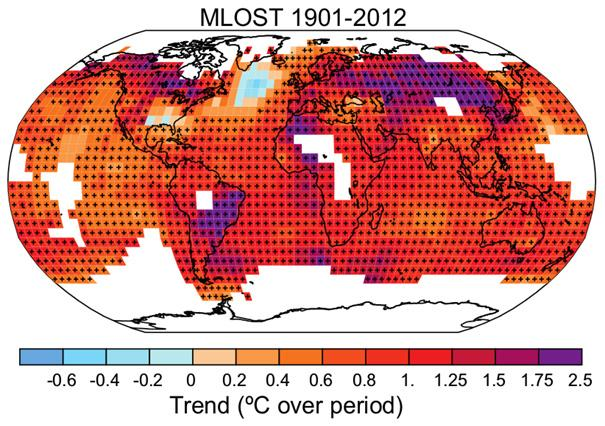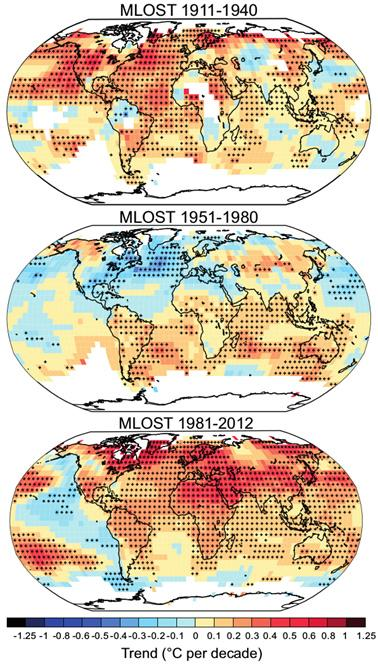
Are temperatures rising in all regions of the world?No, not quite. It depends in part on the time period and the size of the region under consideration.It is now accepted that the global average temperature has been rising since the beginning of the 20th century, with an acceleration of warming towards the end of the period. However, the mapping of this warming (or spatial distribution) reveals significant contrasts.The figure above shows temperature trends, estimated at each point 1 on the globe, over the period 1901-2012. As this is a fairly long period, climate variability is relatively low, and the trends are essentially representative of long-term evolution. The map shows that the vast majority of regions have experienced a rise in temperature.


https://www.ncei.noaa.gov/products/land-based-station/noaa-global-temp
https://www.ncei.noaa.gov/access/metadata/landing-page/bin/iso?id=gov.noaa.ncdc:C00759




